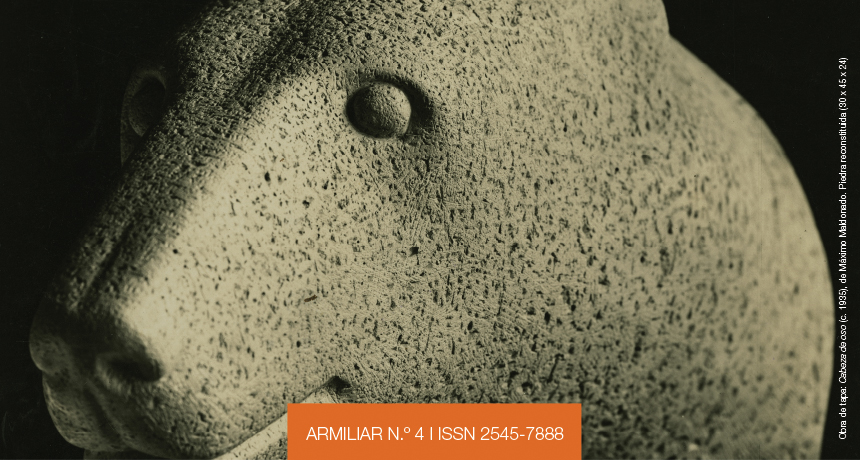Works and Months. Medieval Plaster Casts in the Halls of the Faculty of Arts
DOI:
https://doi.org/10.24215/25457888e026Keywords:
Iconology, plaster casts, medieval calendarAbstract
Undoubtedly, the meaning of the works of art has always been a challenge for art historians. Glimpsing the mentality of the men who produced the works of the past, being able to approach their true and original meaning, requires erudition, as well as a deep knowledge of the historical, economic and social context as well as of beliefs, ideas, etcetera of the society that produced them. In this sense, the present work aims to offer a summary of the iconological interpretations available in the bibliography, about the iconography that three pieces of the collection of plaster casts of the Faculty of Arts of the National University of La Plata thematize in order to precise existing attributions.Downloads
References
Cohen, S. (2014). Transformations of Time and Temporality in Medieval and Renaissance Art [Transformaciones del tiempo y la temporalidad en el arte medieval y renacentista]. Recuperado de: https://books.google.com.ar/books?id=yqQdAwAAQBAJ&lpg=PR5&ots=bWl3McuuxD&lr&pg=PR5#v=onepage&q&f=false
García Mahíques, R. (2008). Iconografía e iconología. La Historia del arte como Historia cultural. Vol. 1. Madrid, España: Encuentro.
Le Goff, J. [1985] (1996). Los intelectuales en la Edad Media. Barcelona, España: Gedisa.
Le Goff, J. [1982] (1999). La civilización del occidente medieval. Ciudad Autónoma de Buenos Aires, Argentina: Paidós.
Lobkova, N. (2010). The cycle of the year: The genre of calendar illustrations from origins to Lucas and Maarten Van Valckenborch [El ciclo del año: el género de ilustraciones de calendario desde los orígenes hasta Lucas y Maarten Van Valckenborch] (Tesis de maestría). Recuperado de https://lib.ugent.be/fulltxt/RUG01/001/457/590/RUG01-001457590_2011_0001_AC.pdf
Mâle, E. [1986] (2001). El arte religioso francés del siglo XIII en Francia. El Gótico. Madrid, España: Encuentro.
Martínez Lorca, A. (2015). La filosofía medieval. De al-Farabi a Ockham. Barcelona, España: EMSE EDAPP S.L.
Moralejo Álvarez, S. (2004). Formas elocuentes. Reflexiones sobre la teoría de la representación. Madrid, España: Akal.
Panadero, M. J. H. (1984). The labors of the months and the signs of the zodiac in twelfth-century french facades (Volumes I-II) [Las labores de los meses y los signos del zodiaco en las fachadas francesas del siglo XII (Volúmenes I y II)] (PH.D. Dissertation). The University of Michigan, Michigan, Estados Unidos.
Ruiz Montejo, I. (1993). El calendario de Beleña de Sorbe. Anales de la Historia del Arte, (4), 491-504. Recuperado de https://revistas.ucm.es/index.php/ANHA/article/view/ANHA9394110491A
Vernieri, J. Z. (2019). La representación del calendario medieval en tres calcos de yeso de la colección de arte de la FBA-UNLP. Investigación histórica e iconográfica (Tesis de grado). Recuperado de http://sedici.unlp.edu.ar/handle/10915/80524
Downloads
Published
How to Cite
Issue
Section
License
Current policy since 2019
The acceptance of the manuscript by the magazine means the non-exclusive cession of the property rights of the authors in favour of the editor, who allows the reuse, after publication (post print), under a license Attribution-NonCommercial-ShareAlikes 4.0 International (BY-NC-SA 4.0).
According to these terms, the material can be copied and redistributed by any means or in any format as long as a) the author and original source of the publication are quoted (magazine and URL of the work), access to the license is provided and whether changes have been made is mentioned; and b) the material is not used for commercial purposes.
The cession of non-exclusive rights means that after the publication (post print) in Armiliar the authors can publish their work in any language, means and format; in such cases it must be mentioned that the material was originally published in this magazine. Such cession also means the authorization of the authors for the work to be collected by SEDICI, the institutional archive of the Universidad Nacional de La Plata, and to be spread in the databases that the editorial team considers appropriate to increase the visibility of the publication and its authors.
Moreover, the magazine encourages the authors to deposit their productions in other institutional and thematic archives under the principle that offering the society the scientific and academic production without any restrictions contributes to a greater exchange of the global knowledge.



























